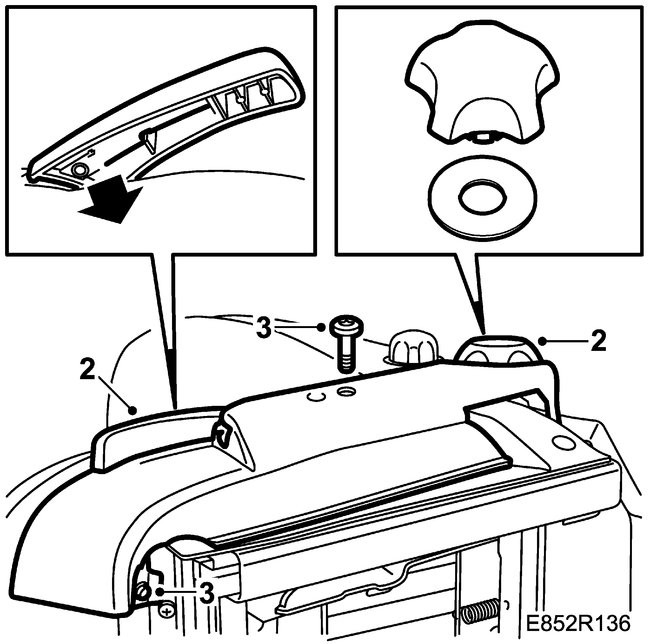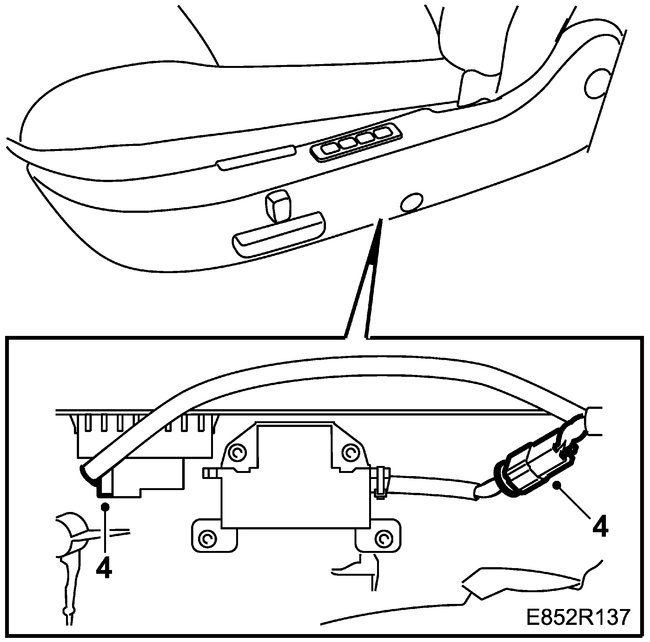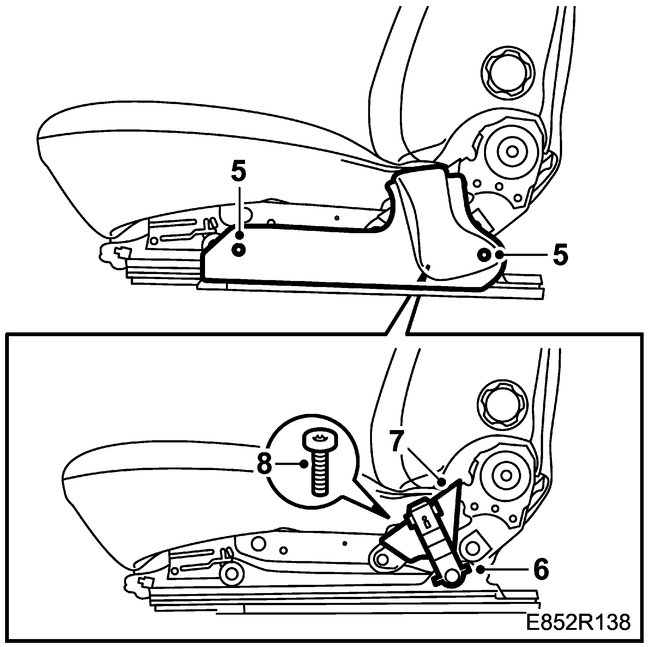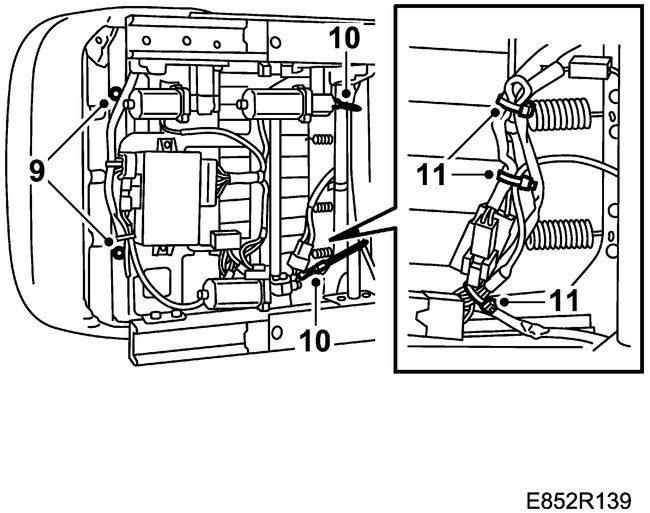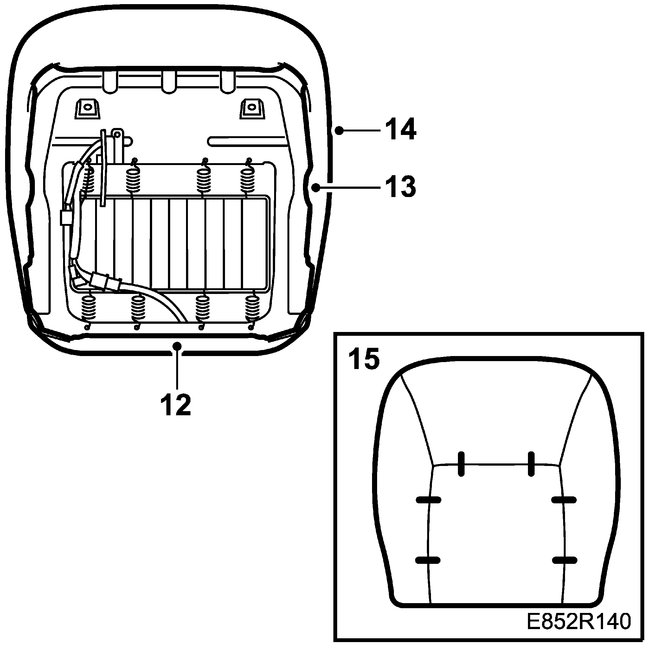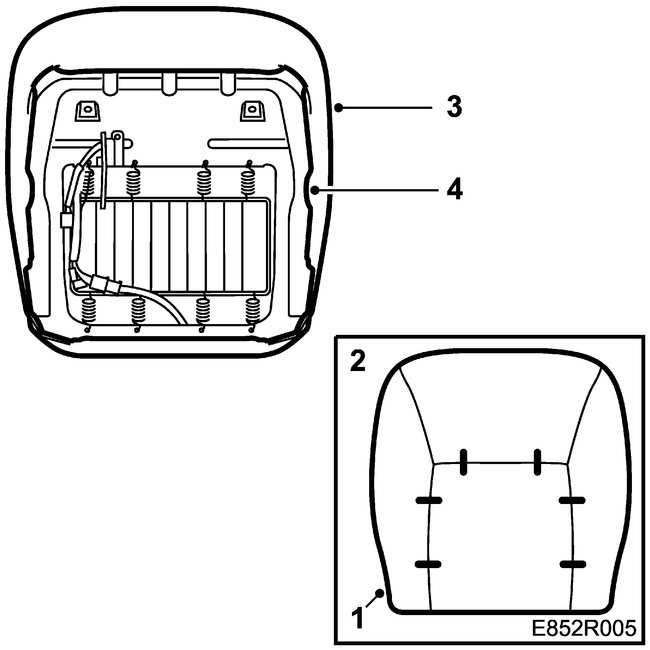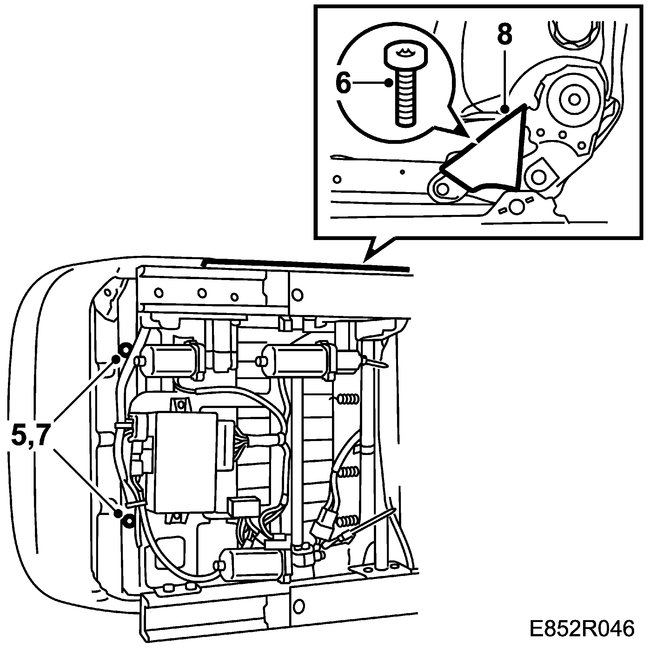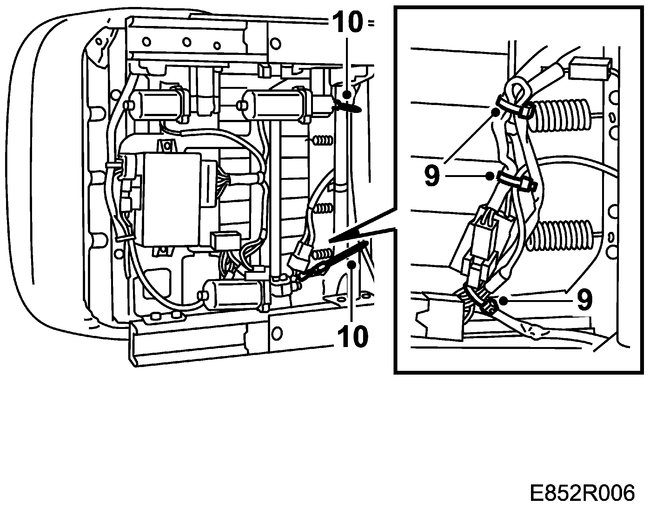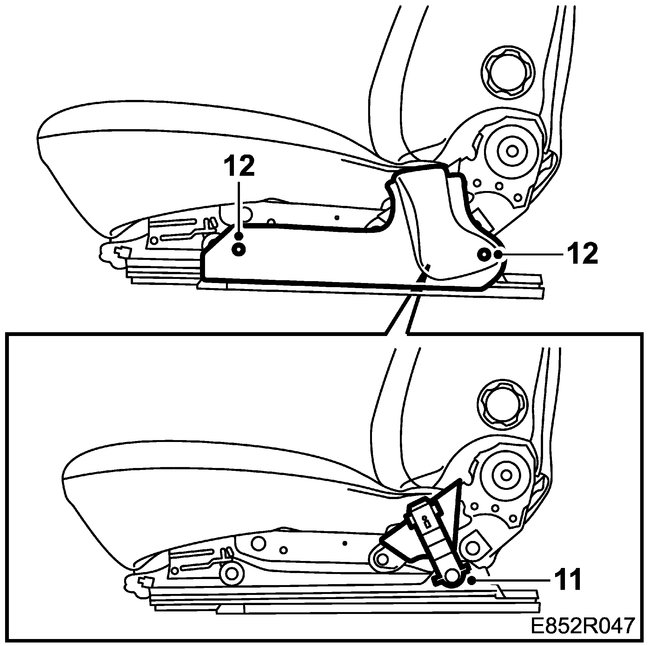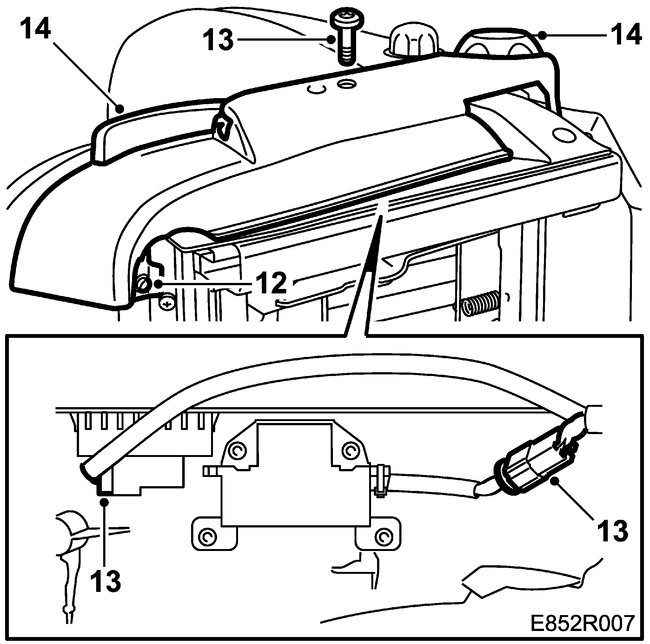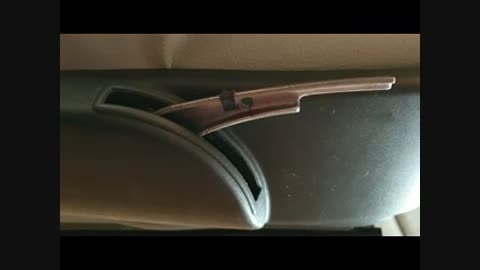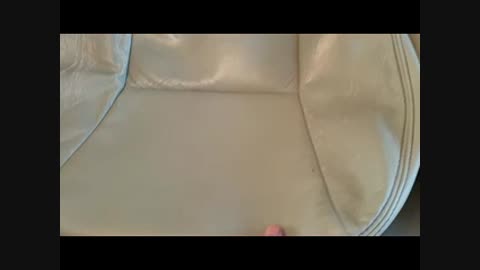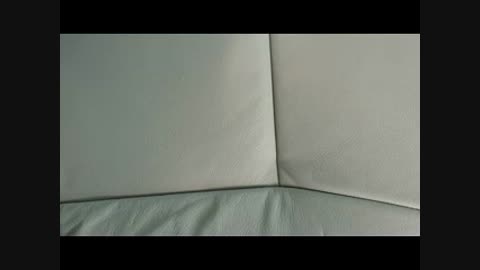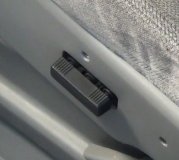I am going to post the steps I did to replace the seat covers as the steps are slightly different to what you posted Joe.
Work on one seat at a time (non-electric seats):
1. Remove a seat by unscrewing the four T40 torx bolts that hold the seat to the chassis, and the seat belt bolt (17mm) on the side.
This is done by getting the seat as far forward as possible by using the lever at the front of the seat to slide the seat forward, as well as getting the seat back angled as far forward as possible by turning the knob at the side of the seat until the seat back is angled as far forward as it will go. Working from the area where the rear seats are (rear doors), undo the two torx bolts near the end of the seat rails that are located inside the seat rails. This is also a good time to remove the seat belt bolt.
Moving to the front door area in front of the seats move the seat back as far as it will go by using the lever at the front of the seat to release the seats and push them back. This will reveal the two torx bolts at the end and inside the rails. Undo both.
2. Lift up the front of the seat so that the underside is accessible. You can rest the back of the seat on the rear seats if necessary.
3. Un-clip the main socket connector from the seat. This is achieved by getting your fingernail(s) under the red plastic piece on one end and pulling it away from the body of the socket. This will allow the socket to be levered up and off the socket that is attached to the seat.
4. There is a clip/grommet that holds the black cable that comes from the socket to a part of the seat frame. Squeeze this clip/grommet so that it can be pushed back out of the hole that it is in.
5. Un-attach the two clips that hold the socket cable to the seat spring structure.
6. You can now lift the seat out of the car through its front door.
7. Find a place to work on the seat where there is lots of room so you can access all parts of the seat easily. Place the seat here on its rails.
8. Adjust the seat back so that the seat back leans back at an angle. Observe the gap at the bottom of the seat back and adjust the seat back to the point where the gap between the bottom of the seat back and the seat is the largest.
9. Take a small flat head screw driver and pry the lever cover off of the lever on the side of the seat. This is done by moving the lever down then fully up and taking the screw driver to the inside of the plastic cover and unlatching it from the metal part of the lever. See video from Thursday, August 1st, 2019 at 10:45 AM above.
10. To take the plastic cowling trim off of the seat one has to first take off the large adjustment knob that changes the angle of the seat back. This knob clips onto the axle so one just has to use some pressure/force to pull it off. Then remove two torx screws (I think they are T20's - its best to get a complete Torx bit/screw driver set - you can also use a 1/8" wide flathead screw driver ) that keep the cowl attached to the seat frame. One screw is under the front of the seat where the cowling curves around the corner of the seat and the other is hidden behind a round plastic cover in the middle of the cowl on the side of the seat. After removing these two screws, slide the cowl forward making sure that the plastic trim at the back of the seat, where the seat back angle adjustment knob is usually located, clears the frame of the seat by lifting it away.
11. Unclip the small bungee cord that attaches the rear flap of the seat back cover to the seat frame under the seat.
12. Undo the four T50 torx bolts (2 on each side) that attach the seat back to the bottom seat frame. These are the only two large torx bolts on each side so they are easy to spot. See if you can have someone help you hold the seat back so that it does not fall onto the ground. Place the seat back behind the seat as there are wires going from the seat back to the seat bottom. There should be about a 1 inch gap or so between the frame of the seat back and the seat bottom. This will give you enough room to get the seat cover off of the seat bottom frame at the back of the seat.
13. Underneath the back of the seat there are two hooks that come down from the seat cover which are attached to the seat spring frame. One is right by the connector block and the other is on the other side and is easier to get to. Using a pair of long nosed pliers pull these hooks towards you and then to the side and down so that they are no longer attached to the seat spring frame.
14. Starting at the front of the seat pry the rubber lip off of the frame of the seat. This can be a bit tough on your fingers but it is doable and does not need any special tools, just lots of patience. Work your way from the middle of the front of the seat down either side, working first on one side and then the other. Do this until the entire front part of this rubber lip is off the metal frame. Do the same for the 2-3 inch lengths of rubber lip that are on either side of the seat just in front of the rear section. Finally, take the rubber lip off the rear of the seat frame that holds the rear flap of the seat cover down.
15. The covers are very tight over the corners of the seat frame and they seem to need a lot of force applied to them to get them off this part of it.
16. Once you have accomplished the above you can remove the seat from the seat frame.
17. The seat cover is attached to the seat cushion (which is made of sturdy foam) by 6 metal †staples’. These staples are circular pieces of metal (similar to a key ring) that can be re-used if pried apart carefully. Starting on one side of the seat, fold back the leather to reveal the staples. Using two pairs of long nosed pliers hold one part of the staple (near the end) while prying apart the staple with the other pair of long nosed pliers (by prying apart the other end of the staple). Do this until a small gap appears between the two ends of the staple so that it can then be slipped off the rod. Do this for all other 5 staples, working on one side then the other and then finally the front. When all 6 staples are off of the rods you can then remove the cover from the cushion.
18. To put the seat cover on, the process is the reverse of the steps above starting with step 16 and working your way up to step 1.
Note: To recreate the holes for the staples in the underside of the new cover place the old cover’s underside to the new cover’s underside, with both in the same position †front of the new seat cover to front of the old seat cover, and make holes for the staples in the new cover’s underside according to the holes on the underside of the old cover. One can do this using a large, long nail †about 1/8” by 3 inches.
Starting at the front of the cover, attach each staple to the rod by holding the staple with a pair of long nosed pliers and threading the staple through the hole (which should be above the rod) that one has just made. Once the staple is threaded through take the other pair of pliers and bring the other end of the staple towards the end being held by the other pliers. Using just one pair of pliers force the staple closed so that the ends of the staple overlap. Do this with the 5 other staples going from the front, then down one side and then the other. Remember that the staples go around the metal rods which are on the underside of the cover, and go through the holes of the fabric that were made for this purpose with the nail.
19. Once the staples are in place, fold the cover down around the cushion and place the cover and cushion on the seat frame. Starting from the front of the seat fold over the rubber lip and push it onto the metal lip of the seat frame. This is not going backwards in sequence as I suggested above, but is done this way to make sure the seat is positioned correctly.
20. Next, push the side pieces of the rubber lip onto the side of the seat frame trying to make sure that the leather is in the correct position and not stretched towards one end.
21. The corners are the second-to-last items to be put on the frame and can be quite difficult to do as this section of the leather seat cover may seem too small, but all one has to do is exert a lot of force with one’s hands and fingers to push the cover over the corners and down. Make sure that the flap at the back is then pulled down. Then push the rear rubber lip onto the seat frame.
22. Re-attach the seat back by getting someone to hold the seatback in place while you re-attach the T50 torx bolts.
23. Attach the bungee cord of the seat back flap to the clip under the seat.
24. Swivel the seat up from the front and find the two hooks that come down from the top of the seat cushion. Re-attach them to the seat spring frame by using the long nosed pliers.
25. Slide on the seat cowl trim, being careful to make sure that the washer is still in place (in was held in place by some tacky glue on mine) in the middle of the side of the trim (where the round plastic cover is). Screw the side on first making sure the trim seats properly at the rear of the seat area where the adjustment knob goes on and at the front, under the seat, where the trim has a tab that goes under where the screw goes in. Then screw on the front torx screw that is under the seat.
26. Attach the adjustment knob for the seat back.
27. Attach the side lever plastic trim by sliding it on to the naked metal lever and make sure you hear a click which means that the small round tab has engaged the hole in the metal lever.
28. Adjust the seat back angle so that it is leaning as far forward as possible. Then take the seat out to the car and place it inside the car via the front door.
29. Swivel the front of the seat up (you can rest the seat on the rear seat) and attach the grommet on the black cable to the hole that it was in originally (the front one, as there are two).
30. Plug in the seat connector.
31. Re-attach the two clips on the black cable to the seat spring frame.
32. If needed, use a zip tie to re-attach the bundle of cables to the seat spring frame. Swivel forward the seat so that it sits flat on the chassis of the car. Make sure that all four holes are seen through the seat rails and that the seat rails are in their correct positions.
33. Attach the two front T50 torx bolts if the seat has not moved from its position on the seat rails when it was taken out of the car. If the seat has moved, lift the lever at the front up and move the seat as far back as possible making sure both seat rails do not move and then attach the T50 torx bolts.
34. Move the seat as far forward as possible and attach the two T50 torx bolts in the rear holes. Also attach the seat belt bolt after threading the seat belt through the slot in the seat trim cowl.
35. Arrange the seat as you want and you are finished.
Lots of text. Sorry about that. I didn’t have anyone who could spend the time with me videoing what I was doing.
Wednesday, August 7th, 2019 AT 9:29 AM
